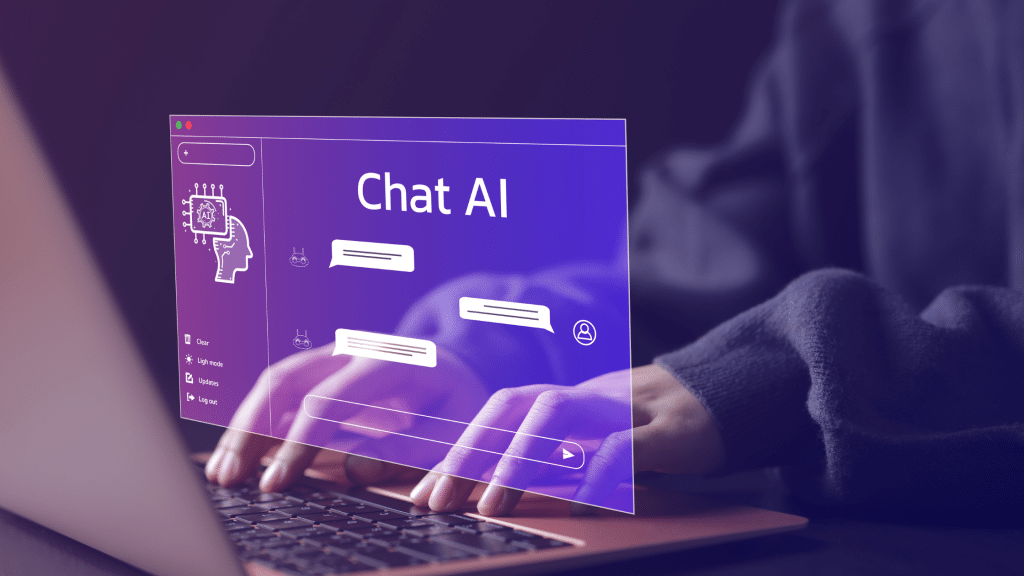Businesses are witnessing a revolution driven by Artificial Intelligence (AI) and Machine Learning (ML). AI and Machine Learning shift how companies operate. Artificial Intelligence and Machine Learning can automate tasks, personalize customer experiences, and so much more. This article explores the effect of Artificial Intelligence and Machine Learning methods on businesses. We also outline practical applications and considerations for the implementation of Machine Learning applications and AI.
AI and ML: Powering Modern Businesses
What is Artificial Intelligence?
Artificial Intelligence (AI) refers to the simulation of human intelligence in machines. AI systems can interpret, understand, learn, and make decisions based on data. AI is a broad field with various applications. These include natural language processing, machine learning, and computer vision. AI creates intelligent machines capable of mimicking human behavior. Artificial Intelligence replicates human intelligence in machines. Artificial Intelligence includes a wide range of technologies and techniques. AI systems consist of several core components. These enable AI systems to perform advanced tasks. Machine learning algorithms help AI systems learn from data. The algorithms can then make predictions or decisions without explicit programming. Natural language processing enables machines to comprehend and generate human language. Computer vision enables AI systems to analyze and process visual data.
What is Machine Learning?
Machine learning (ML) is a subfield of artificial intelligence (AI). In machine learning projects, algorithms learn from data. They then use that data to make predictions or decisions without explicit programming. By analyzing patterns in the data, the machine learning algorithm learns what features define a particular data point. The algorithm can then apply that knowledge to new data. A machine learning model Machine learning is:
- Data-driven: Machine learning algorithms rely upon large amounts of data to learn and improve.
- Predictive: Machine learning models are often used to make predictions about the future.
- Generalizable: Machine learning models learn from existing data. Machine learning models then apply that knowledge to new, unknown situations.
- Used for a variety of tasks: Machine learning can be used for a wide range of tasks. These include: image recognition, fraud detection, speech recognition, recommendation engines, personalization, and more.
- Uses two different approaches: unsupervised machine learning, and supervised machine learning. Supervised machine learning and supervised learning algorithms require labeled data. Unsupervised machine learning deals with unlabelled data. This is where the data points lack predefined labels or categories. In unsupervised machine learning, the machine learning model is left to its own devices. The unsupervised machine learning and unsupervised learning models must discover hidden patterns and structures within the data on its own. Unsupervised learning algorithms are often used for tasks like clustering and dimensionality reduction. While an unsupervised learning technique doesn’t use labeled data, it can be difficult to interpret the results. This also means it’s difficult to assess if the model is on the right track. Unsupervised learning algorithms have a variety of use cases, but we’ll discuss those another time.
- Uses different types of data: training data, validation data, and test data. Training data is used to train a machine learning model to predict an expected outcome. Validation data is used to check the accuracy and quality of the model used on the training data. Test data is used to perform a realistic check on an algorithm. Test data, also known as a testing set, or test set, confirms if the machine learning model is accurate.
Combining Artificial Intelligence and Machine learning enables you make faster business decisions. You can optimize your business processes. Artificial Intelligence and Machine Learning enable you to handle massive datasets. This enables data-driven decision making. This is a key advantage in today’s competitive market.
Real-World Examples of AI and ML in Action
Retailers use AI and ML for inventory management and targeted marketing. Finance leverages AI for fraud detection and algorithmic trading. Healthcare organizations use AI and ML for diagnostics and patient care. These examples showcase the versatility of AI and ML in driving innovation.
Implementing AI and ML for Your Business
Successfully adopting AI and ML requires a strategic approach. Here are key steps to consider:
- Identify opportunities: Pinpoint areas in your business that can benefit from automation or data analysis. This could involve streamlining operations, improving customer service, or gaining market insights.
- Building Your AI Team: Implementing AI and ML might require specialized skills. Consider training existing staff or hiring experts in these areas. You’ll also need to choose the right technology partners or platforms.
- Integrating with Existing Systems: Ensure AI and ML seamlessly integrate with your current business systems. This ensures data flows efficiently, allowing AI and ML algorithms to function effectively.
Challenges and Considerations
While AI and ML offer significant benefits, businesses face challenges during adoption. Here’s a look at some key considerations:
- Data Quality and Privacy: AI and ML rely on high-quality data. You must ensure data accuracy and address privacy regulations to avoid issues. Data quality is important for the training process for your Machine Learning model. The better your input data and data sets, the better the deep learning your model can undertake. This helps with reinforcement learning, data mining, and handling unlabeled data in the future. Ensure your business adheres to best practices and regulatory frameworks when processing data.
- Change Management: Introducing AI and ML can lead to employee concerns about job security or new technology. Clear communication and training programs can help address these concerns.
- Ethical Use: You need to consider the ethical implications of AI and ML, such as avoiding bias in algorithms and ensuring fair and transparent use.
Harnessing the Power of AI and ML
Graphite Note simplifies AI and ML implementation for businesses. This user-friendly platform enables you to analyze data and leverage the power of AI and ML without extensive technical expertise. It’s a valuable tool for small and medium-sized businesses looking to unlock growth with AI and ML.
The Future of AI and ML in Business
The future of AI and ML in business is brimming with potential. As these technologies evolve, new opportunities will emerge. Here are some exciting trends to watch:
- AI and the Internet of Things (IoT): This convergence enables real-time data processing and decision-making, leading to enhanced automation and efficiency across industries.
- Natural Language Processing (NLP) Revolutionizes Customer Interactions: Chatbots and virtual assistants powered by AI are becoming increasingly sophisticated, offering personalized support and driving customer engagement.
The Effect of AI and ML on the Workforce
AI and ML transform the workforce landscape. While automation may eliminate some jobs, it also creates opportunities for upskilling and reskilling employees. Businesses need to invest in training programs to equip their workforce to collaborate effectively with AI systems.
AI and ML for Small Businesses
While large corporations have been at the forefront of AI and ML adoption, small businesses can also benefit. They can start by focusing on specific areas where AI and ML can add immediate value, such as automating tasks or personalizing customer interactions. Cloud-based AI services offer cost-effective solutions for small businesses looking to integrate these technologies.
Key Considerations for Small Businesses
When implementing AI and ML in a small business, consider factors like scalability, data security, and regulatory compliance. Partnering with AI service providers or consultants can help navigate the complexities of AI implementation. Fostering a culture of innovation and continuous learning is crucial for successful AI adoption. AI and ML hold immense potential for businesses that embrace them. By understanding the applications, strategies, challenges, and future trends of AI and ML, companies can position themselves to achieve significant growth. As AI and ML continue to evolve, staying informed, adaptable, and proactive will be key to unlocking the full potential of these technologies for long-term success.
Your Business Doesn’t Need a Team of Data Scientists
With Graphite Note, you can leverage AI and ML’s capabilities without a team of data scientists. Our platform empowers your business to:
- Identify Key Business Drivers: Quickly pinpoint the factors that significantly impact your business success.
- Predict Future Outcomes: Gain insights into what the future holds for your company, allowing for proactive decision-making.
- Empower Your Teams: Equip your Business Intelligence and Data Analytics teams with the tools they need to unlock new revenue streams and optimize business strategies.
Take Control of Your Business Future with Graphite Note
Request a demo and step into the new era of business intelligence with Graphite Note. We’ll show you how our platform can transform your data into actionable insights, driving innovation and propelling your business towards long-term success.




